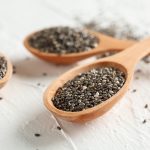The intensity of your exercise can be measured in two ways: your heart rate and how you feel.
A higher heart rate means higher intensity. An easy and widely used way to calculate the maximum heart rate (MHR) is 220 minus your age. So, if you are 30-years old, you have an MHR of 220 minus 30 i.e. 190. Another way to do this is 214 less (0.8 x age) for men or 209 less (0.9 x age) for women,
If you are exercising at moderate levels, the MHR zone is 50 to 70 percent of MHR. At an intense level, the MHR is between 70 to 85%.
When you are in good health and starting off, you can aim at the lower band of the MHR zone. With practice and good health, you can target to reach the upper band.
A subjective scale of how one feels during exercising has been widely accepted as a fairly reliable surrogate for understanding exercise intensity. This is the Borg Scale, developed by Gunnar Borg. Here one has to subjectively rate your level of exertion during exercises. The original scale was from 6 to 20. But Borg also developed another scale that goes from 0 to 10.
0: Nothing at all
1:Very weak
2: Weak
3: Moderate
5: Strong/heavy
7: Very strong
10: Extremely Strong, Maximal
An Easy/Relaxed activity would be one that does not change the breathing rate much. The heart rate is 40 to 55% of MHR. The Borg Scale score remains between 1 and 2. You would be able to sustain the activity for 60 minutes.
Moderately Intense activity can be done for 30 to 60 minutes. You are able to maintain this intensity even while having a conversation. Heart rate is 55 to 70% of MHR. The Borg Scale rating is 3.
Intense/Vigorous: This is when it is difficult to carry on a conversation without interrupting the activity. The heart rate is 70 to 90% of the maximum. The Bog Scale is 5 to 6. You can keep up this activity for up to 30 minutes max.
Any RPE of 7 or more with a heart rate above 90% that cannot be sustained for more than 10 minutes is classified as high intensity and is not part of standard recommended regimens in the app.






